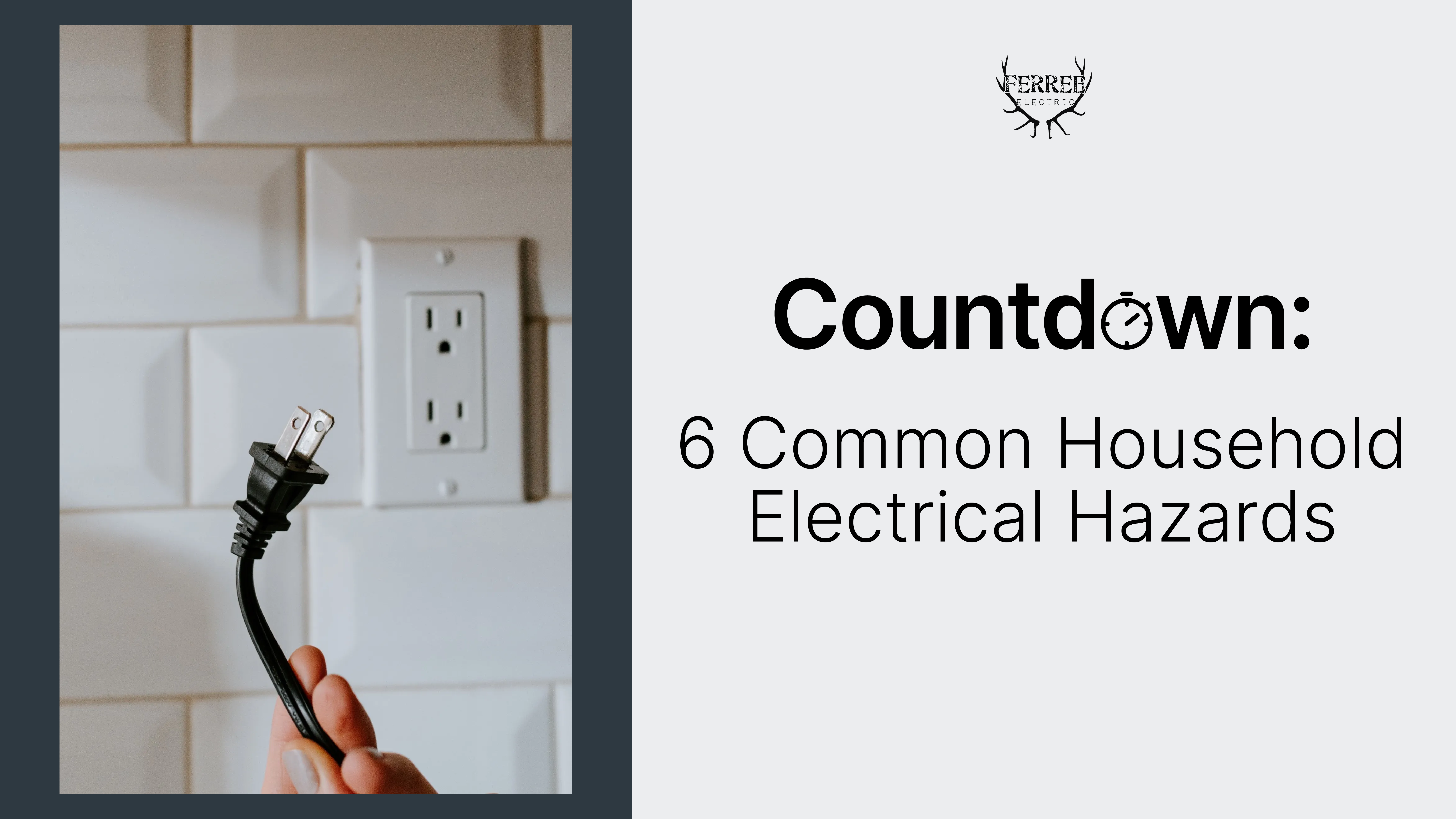Without sounding “doom and gloom”, we wanted to remind you about common household electrical hazards. Here’s a countdown of household hazards we see often. The good news is that there is no reason to fear because these are all things you can fix yourself!
6. Outlet Overload
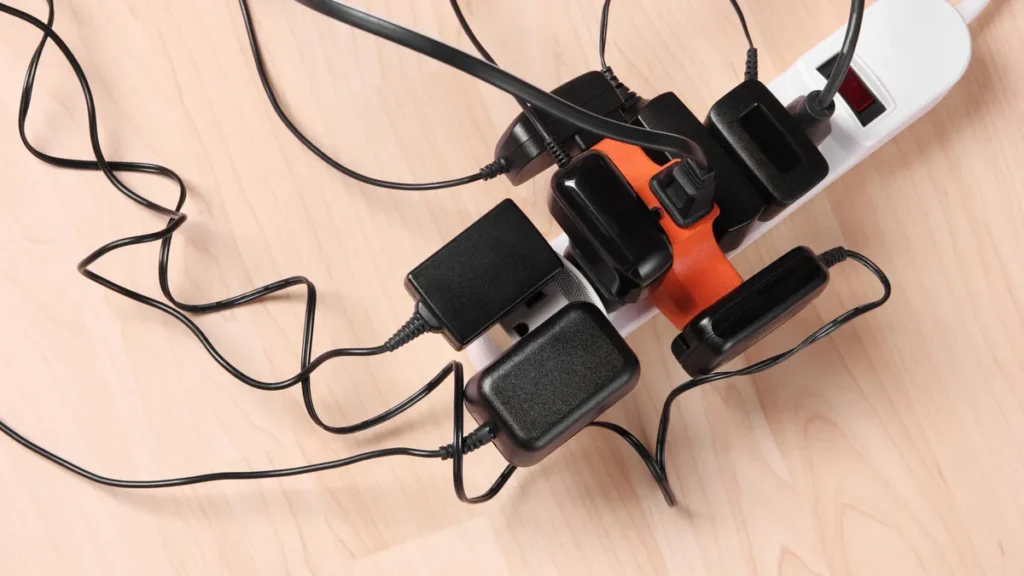
While the outlets in your home are very handy, they can only handle so much. An outlet overload occurs when the outlet carries more electricity than it’s designed to manage. Causes of this include plugging too many appliances in at once, using damaged cords or appliances, or even using power strips.
When an outlet is overloaded, it might feel warm to the touch, show discoloration on the socket or switch, make buzzing or crackling sounds, trip the breaker, or even smell like something is burning. Any of these signs can tell you to decrease the strain on your outlet, and it’s important to act promptly because ignoring it can lead to power loss, wiring damage, or even fires.
To prevent an outlet overload, plug major appliances directly into the wall, using only one outlet at a time. Avoid using power strips because they only increase the number of available outlets without increasing the actual power capacity of an outlet. Pay attention to the warning signs of an overloaded outlet and act immediately if changes are necessary.
5. Cord Damage
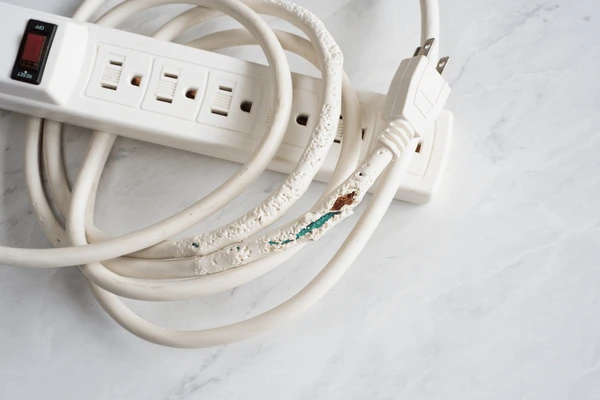
When an electrical cord is damaged, you might see fraying, cracking, peeling, melted plastic, exposed wires, or even burn marks. Lamps that dim and flicker could also be an indication of a damaged cord.
Damaged cords could expose wires that increase the risk of electrical shock- ouch. Additionally, those exposed wires become a fire hazard, especially when the cords are resting on flammable materials.
You can sometimes repair minor electrical cord damage by using electrical tape to completely cover the damaged area. However, if there is major damage, it’s best to simply replace the cord to avoid any risk.
4. Covered Cords

Sometimes, for aesthetics’ sake, we are tempted to hide electrical cords under rugs, carpets, or other materials. However, this is dangerous because when the cord is covered, there isn’t anywhere for the heat generated by the cord to escape, which can lead to a fire.
As much as we may not like the appearance, it’s important to keep cords visible. This allows heat to disperse and also helps you be able to see if there is damage to the cord at any time. If you must cover a cord, use a proper cord protector to do so.
3. Water
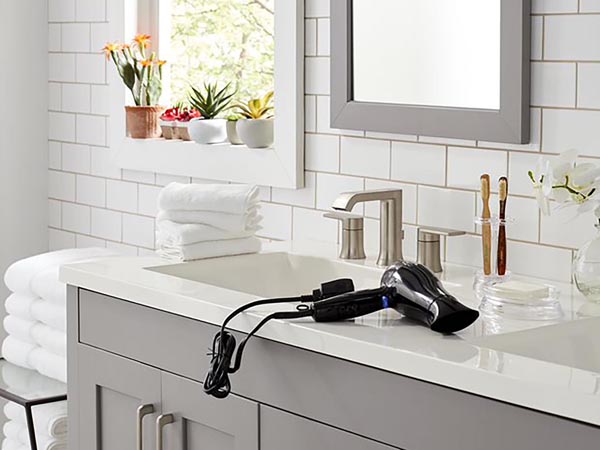
It almost seems like a no-brainer, but it’s easy to forget that water and electricity do not play nicely together.
Store electrical devices like hairdryers, hair curlers, or razors in a dry place away from under or around the sink. When using those appliances, be mindful to keep the cord away from water of any kind. GFCI outlets are also a valuable preventative measure to have in your home.
GFCI outlets are required in areas near water or potential moisture, such as kitchens, bathrooms, laundry rooms, garages, unfinished basements, or outdoor spaces. They are required within six feet of a plumbing fixture or moisture source like sinks or bathtubs.
If you notice that your home doesn’t have GCFI outlets, you can contact us to get your home up to code and give you extra peace of mind.
2. Extension Cords
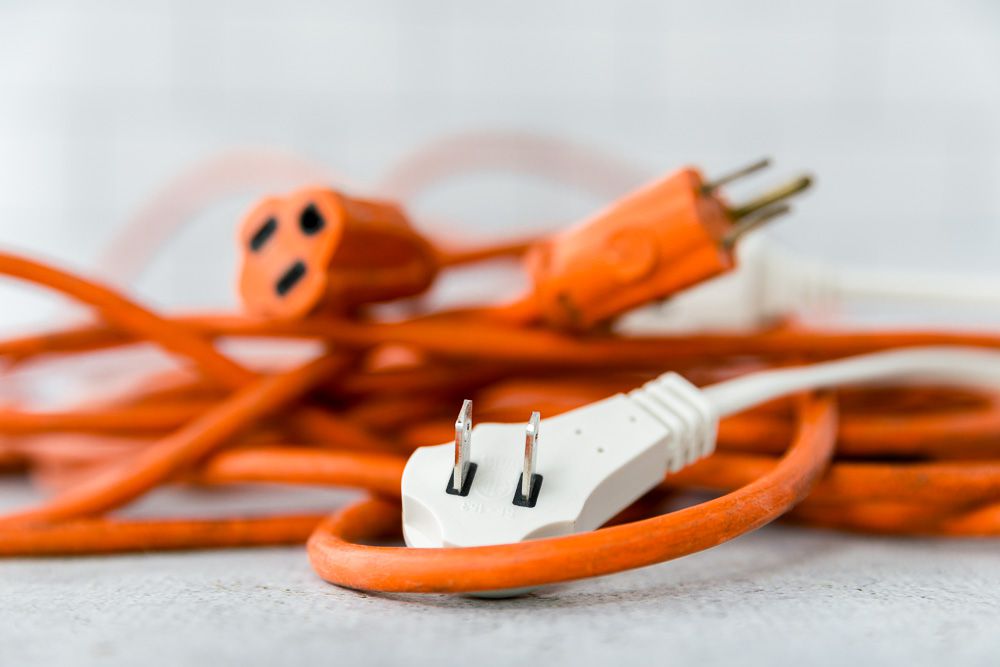
Extension cords can be a source of several hazards like overloading, fires, electrical shock, and tripping which can lead to injuries. To help reduce the risk, use extension cords only temporarily. If you think you need to use one for a long period of time, it might be worth looking into adding additional outlets to your space.
When using extension cords, it is best to keep them clear of walkways or high-traffic areas. When that isn’t possible, tape down and clearly mark off cords that temporarily extend across doorways, hallways, or aisles.
1. Childproofing
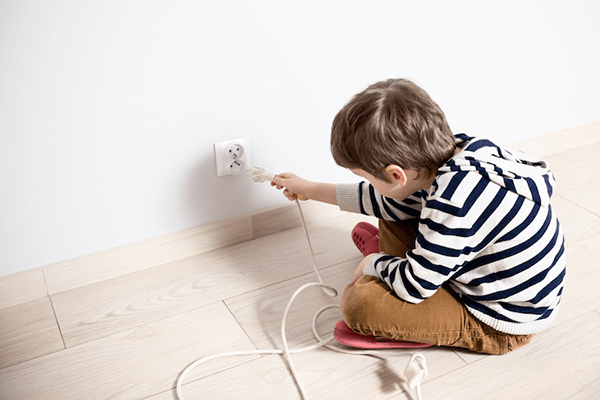
Little fingers fit all too easily inside outlets and other dangerous spaces, so make sure your outlets and other electrical devices are childproofed. This can easily be done by using outlet covers or similar products to protect children from the risk of electrical shock. Safety 1st offers a variety of options so you can find what works best for your family. These products are available at most local stores.
As simple as it sounds, the clear design of these outlet covers keeps them uninteresting to small children. Additionally, the rounded edges make them harder to remove from the outlet. These are adult-removable and reusable.
These are inserted the same way as a regular outlet cover, but they require an extra step to remove them from the outlet. You press the tab in the center (which can be slightly tricky even for adults) and that pushes the cover away from the outlet so you can pull it out. This extra step makes it extra hard for little ones to figure out.
Outlet Cover with Cord Shortener
This is a two-in-one outlet cover. Not only does it cover outlets entirely, but it also has space to wrap extra cords to prevent your child from getting tangled up– not to mention, it also makes things look tidy and organized.
If you ever have questions or concerns about the electrical safety of your home, we are more than happy to come take a look to help your family be safe and happy. Give us a call at 801-702-8930 or send us an email at Sam@ferreeelectric.com to protect your home with a Generac backup power system of your own.

